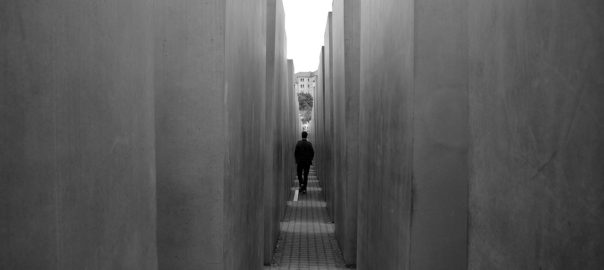The little-known story of Fredy Hirsch, a German-Jewish youth leader and athlete, has recently gotten some attention in the media. The Jewish news and culture magazine The Forward recently featured an in-depth article on this remarkable man. I was glad to see he is finally getting more of the recognition he deserves. Being Jewish and gay made Fredy a prime target for the Nazis, yet he displayed remarkable courage in confronting them. Read on to learn more about the story of Fredy Hirsch.
Early Life
Alfred Hirsch, known as Fredy, was born in 1916 and raised in Aachen, Germany. In Aachen, he began his career as a teacher and educator in various Jewish youth organizations. An enthusiastic and talented athlete, Fredy also worked with Jewish sports associations. After the Nazis came to power in Germany, he fled to Czechoslovakia, where he believed he would be safe. Tragically, Czechoslovakia wouldn’t remain safe for long.
In 1939, the Nazis marched into Czechoslovakia and began implementing laws against Jews. Among the many laws, the Nazis forbade Jewish children from attending school, joining clubs and teams, and visiting public places. When Fredy saw what was happening, he decided to do something about it.
Activities in Prague
Using the Jewish-owned Hagibor sports complex in Prague as his base, Fredy arranged a wide variety of educational activities, classes, and sports programs for Jewish children. Children who survived the war would remember the activities Hirsch arranged fondly, the gymnastics classes and soccer games which made their lives seem a little more normal and bearable. He was also involved in Zionist causes and assisted in efforts to bring Jewish children to Palestine.
Life in Terezin
When he was deported to Terezin in December 1941, Fredy organized activities for the children there. He used some grassy areas in Terezin as playing fields for sports games, including soccer and track and field events.
Fredy was described as athletic, attractive, and extremely caring. He made sure that the children kept themselves as clean as possible despite the lack of hot water and soap. Survivors remember him as a very kind and reassuring presence to the children. Fredy also secured medical treatment for the children and removed some of them from transports to the East.
Transport to Auschwitz
In September 1943, Fredy and 5,000 other people were sent to Auschwitz. This transport was moved into an empty camp at Auschwitz called the Family Camp. Fredy supervised the hundreds of children in the camp. He did everything he could to make life better for the children, even in the middle of Auschwitz. Fredy actually managed to convince to SS to provide more food for the children and to treat them better. But tragically, Fredy was unable to save the children or himself in the end.
In March 1944, all the children who arrived on the September transport were murdered by the Nazis. Fredy also died at Auschwitz, but it is unclear if he died with the children. The truth about Fredy’s fate remains unknown, though there are several theories. The most often cited theory is that he committed suicide, though most survivors who knew Fredy personally don’t believe he would have taken own life.
Fredy’s Legacy
What ultimately happened to Fredy may never be known, but we do know about all he did for Jewish children in Prague, Terezin, and Auschwitz. Fredy’s greatest legacy was his commitment to doing everything he could to make children’s lives better even in the most terrible and unimaginable circumstances.
To learn more about Fredy, I highly recommend you read the feature article on him in the Forward.
Sources:
We Are Children Just the Same: Vedem, the Secret Magazine by the Boys of Terezin (by Marie Krizkova, Kurt Jiri Kotouc and Zdenek Ornest)
https://forward.com/news/398268/the-little-known-gay-hero-who-tried-to-save-the-children-of-auschwitz/?attribution=more-articles-carousel-item-2-headline
